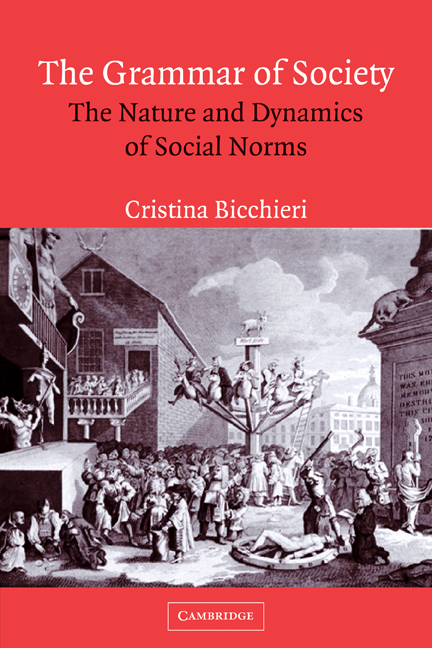 Cambridge University Press, 2006.
Cambridge University Press, 2006.
In The Grammar of Society, Cristina Bicchieri examines social norms, such as fairness, cooperation, and reciprocity, in an effort to understand their nature and dynamics, the expectations that they generate, and how they evolve and change. Drawing on several intellectual traditions and methods, including those of social psychology, experimental economics and evolutionary game theory, Bicchieri provides an integrated account of how social norms emerge, why and when we follow them, and the situations where we are most likely to focus on relevant norms. Examining the existence and survival of inefficient norms, she demonstrates how norms evolve in ways that depend upon the psychological dispositions of the individual and how such dispositions may impair social efficiency. By contrast, she also shows how certain psychological propensities may naturally lead individuals to evolve fairness norms that closely resemble those we follow in most modern societies.
Cristina Bicchieri’s essay, ‘‘Learning to Cooperate’’ (originally published in this journal in 1990), gives the broadest and most philosophically interesting account of norms in the book. She argues that norms of cooperation ‘‘emerge as equilibria of learning dynamics in small-group interactions’’ (p. 17). Given the many equilibria possible in repeated games, "the equilibrium account of norms must be supplemented with a story of how interacting agents learn to recognize a behavioral pattern, how they settle upon a stable pattern, and what sort of behavior is more likely to be sustainable as a norm" (p. 24). Ironically, in contrast to Axelrod, Bicchieri defends Tit-for-Tat in an evolutionary context. She does so by weakening the premises of her model. Where Axelrod’s "initial strategies are randomly chosen from the set of all possible strategies ... I believe that, on the contrary, there are cognitive constraints on the possible strategies that may emerge as stable behavioral patterns in repeated small-group interactions" (p. 36). She goes on to extend her model from small to large groups.
- Peter Danielson, University of British Columbia
